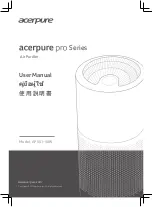
3 - 29
2WAY SYSTEM
Outdoor Unit Repair Procedures
3
8. Pumping Out Refrigerant from Outdoor Unit
2WAY SYSTEM
Outdoor Unit Repair Procedures
7. Charging Compressor Oil
7-3. Charging Additional Compressor Oil (after replacing compressor)
The rated weight of compressors as given below:
When replacing a faulty compressor, be sure to first measure the weight of the compressor.
If the surplus oil is removed along with the compressor, add the same amount of new oil.
For example:
Additional oil to be charged: 27.3 k
g
(removed compressor weight) – 27.1 k
g
(new compressor weight) = 0.2 k
g
≒
0.2 L
* If the result is a negative weight (removed compressor weight is less than the rated weight), it is not necessary
to discharge the extra oil from the system.
The oil absorbs moisture readily. This work must be completed quickly.
CAUTION
Fig. 13
Outdoor Unit Type Compressor model Weight (OIL IN) [k
g
]
5JD650ZCA22
All Units
27.1
Y SYSTEM
es
that came
.
ant Has Already Been Charged
15/03/05 18:25:14
When this is done, the refrigerant pressure from operation
forces the oil out of the oil charge tank, and oil is charged
Vacuum pump
Manifold gauge
Lo
Hi
Liquid tube service port
(for ø7.94mm-dia connector)
Low-pressure outlet port
(for ø7.94mm-dia connector)
High-pressure outlet port
(for ø7.94mm-dia connector)
Gas tube service port
(for ø7.94mm-dia connector)
Oil balance tube service port
(for ø7.94mm-dia connector)
Oil
Type 8HP / 10HP
SM830244-00_2WAY_7-Series.indb 23
15/09/29 16:54:28
7-2. If Outdoor Unit Has Not Been Charged with Refrigerant
When a compressor has been replaced or in any other case where the outdoor unit has not been charged with
refrigerant, first charge with refrigerant then follow the instructions in “7-1. If Refrigerant Has Already Been Charged
to Outdoor Unit” and charge with oil.
Or, alternatively, follow the procedure below.
(1) Connect a tube to the oil outlet port on the outdoor unit to be charged with oil. Insert the other end of the tube into
the oil container.
(2) Follow the instructions in “6. Evacuating System,” and apply vacuum to the outdoor unit to be charged with oil.
When this is done, oil is charged into the outdoor unit through the oil outlet port.
(3) When the unit has been charged with the designated amount of oil, stop the vacuum pump.
The hoses may be subject to internal pressure from the refrigerant inside the out-
door unit. Check that the manifold gauge valves are fully closed beforehand. A
Schrader-type push-to-release valve is provided at each connection port.
CAUTION
For the method used for additional oil charging after compressor replacement, see the section “7-1. If Refrigerant
Has Already Been Charged to Outdoor Unit.”
Required equipment and tools: Jumper wire with clips, adjustable wrench, set of manifold gauge valves for the
refrigerant R410A, refrigerant recovery unit, pre-purged refrigerant cylinder for
recovery, flathead screwdriver, and outdoor unit maintenance remote controller.
This work is performed in order to collect the refrigerant from an outdoor unit where repairs (other than compressor
replacement) will be performed into other outdoor units and indoor units, and the refrigerant tubing.
8-1. If Remote Controller is Used for Maintenance of Outdoor Unit
(1) Connect the manifold gauge valves at the Lo side to the low-pressure outlet port of the outdoor unit to be
repaired. Also connect the refrigerant recovery cylinder to any one of the normal outdoor units at the liquid
line service port (Schrader-type push-to-release valve). Perform the connection work quickly so that no air is
allowed to enter them. (Fig. 14)
* Connecting the refrigerant recovery cylinder is done to prevent pressure from rising excessively during this
operation by recovering the refrigerant from the outdoor unit to be repaired.
(Measure the weight of the refrigerant and cylinder itself beforehand and provide sufficient safety measures,
such as installing a high-pressure cutout in the circuit.)
(2) Connect the outdoor unit maintenance remote controller to the RC connector (CN73) (3P) (BLU) on the out-
door unit control PCB of the outdoor unit to be repaired. Then start a test run of all units. (Press and hold the
(CHECK) button for 4 seconds or longer.)
(3) Use the outdoor unit maintenance remote controller to check the operating status of the indoor units. Check
that all units are operating in Heating mode. For details concerning operation of the outdoor unit maintenance
remote controller, see the section “Outdoor unit maintenance remote controller”. It is also possible to check the
operating conditions either in cooling or heating mode by touching the gas tube.
Cooling mode: low temperature (20
℃
or lower)
Heating mode: high temperature (60
℃
or higher)
The gas tubing becomes hot (60°C or higher) in heating. Be careful so as not to
be burnt when touching the tubing.
CAUTION
(4) Close the balance tube on the outdoor unit to be repaired. Then slowly close the liquid tube service valve.
(5) When the low pressure at the outdoor unit to be repaired reaches 0.5 MPa or below, press the ON/OFF button
on the outdoor unit maintenance remote controller to stop all the units. Then immediately fully close the gas
tube valve on that outdoor unit.
While closing the valves, the rise in discharge temperature or another factor may
cause a protective device to activate, stopping the operation of the outdoor unit. If this
occurs, immediately fully close the gas tube valve on the outdoor unit to be repaired.
CAUTION
(6) Connect the high-pressure gauge side of the manifold gauge to the high-pressure outlet port on the outdoor
unit to be repaired, and connect the manifold gauge to the refrigerant recovery device. Be sure that no air enters
the tubing at this time.
(7) Open both Hi- and Lo-side valves on the manifold gauge valves, and recover the refrigerant remaining in the
outdoor unit. Then measure the amount of recovered refrigerant.
NOTE
To determine the completion of refrigerant recovery, follow the instructions that came with the refrigerant recovery unit.
SM830253-00_欧州2way7_SM-TRSM.indb 29
16/08/26 19:25:17
















































